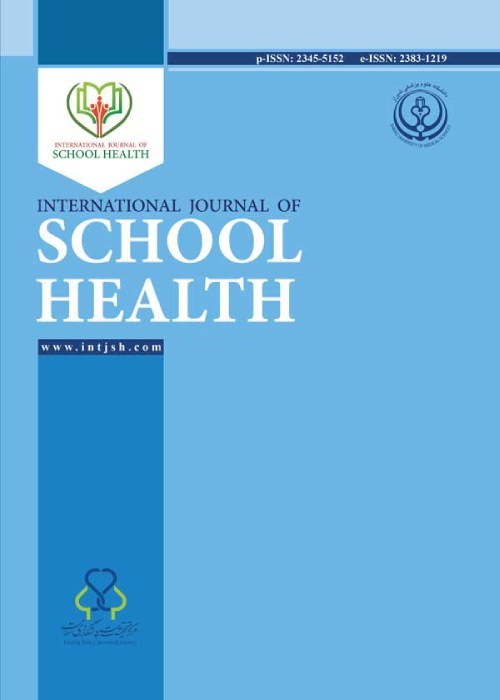Assessing Oral Health Status and Behaviors in 6-Year-Old School Children in Rural and Urban Areas of Shiraz, Southern Iran
Author(s):
Abstract:
Background
Poor oral health can affect general health and quality of life in the school children. Tooth brushing and regular dental checkups can promote oral health status. In Iran, few studies have assessed oral health status, and oral health behaviors and their association in primary school children.Objectives
The present study was conducted to assess the oral health status and behaviors among 6-year-old school children in Shiraz, south-west of Iran.Patients and Methods
This analytic cross-sectional study was conducted during the 2014-2015 school year using a multi-stage stratified sampling method to select 830 first grade school children. Oral examination was performed to register simplified oral hygiene index (OHI-S). Oral health behaviors including tooth brushing frequencies and reason for using oral health services were assessed by completing a questionnaire. Independent-samples t-test, chi-square, one-way ANOVA and logistic regression were used to analyze the data.Results
A total of 801, 6-year-old school children, including 421 boys and 380 girls, and their parents participated in the study, with the response rate of 96.5%, and an overall mean OHI-S score of 0.59 ± 0.4. The OHI-S scores in rural areas were higher than those of urban areas (P < 0.001). The frequencies of tooth brushing were different among rural and urban children (P = 0.005). The percentage of children who brushed their teeth once a day or more was fewer in rural than in urban children. The OHI-S scores were significantly different in children with different tooth brushing frequencies (P < 0.001). The reasons for dental attendance were different in urban and rural areas (P < 0.001), where regular dental visits were more frequent in urban children. The OHI-S scores were different in children with various reasons for visiting a dentist. Children who never visited a dentist, regarding toothaches or regular checkups, had the highest OHI-S scores in comparison to other groups. Frequency of tooth brushing and reason for visiting a dentist both had impacts on OHI-S scores (P < 0.001).Conclusions
Oral health behaviors such as daily tooth brushing and regularly visiting a dentist can improve the oral health status. Therefore, improving oral hygiene behaviors in schools, especially in rural areas, can promote children’s oral health status.Keywords:
Language:
English
Published:
International Journal of School Health, Volume:3 Issue: 1, Winter 2016
Page:
6
magiran.com/p1490986
دانلود و مطالعه متن این مقاله با یکی از روشهای زیر امکان پذیر است:
اشتراک شخصی
با عضویت و پرداخت آنلاین حق اشتراک یکساله به مبلغ 1,390,000ريال میتوانید 70 عنوان مطلب دانلود کنید!
اشتراک سازمانی
به کتابخانه دانشگاه یا محل کار خود پیشنهاد کنید تا اشتراک سازمانی این پایگاه را برای دسترسی نامحدود همه کاربران به متن مطالب تهیه نمایند!
توجه!
- حق عضویت دریافتی صرف حمایت از نشریات عضو و نگهداری، تکمیل و توسعه مگیران میشود.
- پرداخت حق اشتراک و دانلود مقالات اجازه بازنشر آن در سایر رسانههای چاپی و دیجیتال را به کاربر نمیدهد.
In order to view content subscription is required
Personal subscription
Subscribe magiran.com for 70 € euros via PayPal and download 70 articles during a year.
Organization subscription
Please contact us to subscribe your university or library for unlimited access!


